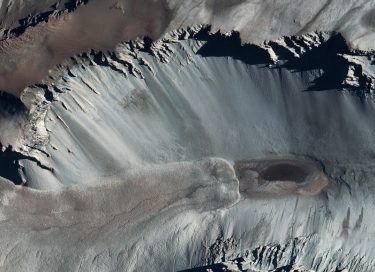
At the base of the Transantarctic Mountains lies a geological oddity. Don Juan Pond is one of the saltiest bodies of water on the planet, filled with a dense, syrupy brine rich in calcium chloride that can remain liquid to minus 50 degrees Celsius, far below the freezing point of water. But the source of water and salt to this unusual pond remains a mystery — even as hints emerge that water in a similar form could exist on Mars.
A new University of Washington study uses the pond’s bizarre chemistry to pinpoint the water’s source. The recent paper, published Sept. 15 in Earth and Planetary Science Letters, reports that it is fed by a regional deep groundwater system and not, as previously suggested, from moisture seeping down from local valley slopes.
“Don Juan Pond is probably one of the most interesting ponds on Earth,” said lead author Jonathan Toner, a UW research assistant professor in Earth and space sciences. “After 60 years of extensive study, we still don’t really know exactly where it’s coming from, what drives the fact that it’s visible on the surface, and how it’s changing.
Read more about this work and what it means at UW Today, Newsweek, Scientific American and The Daily Mail.

